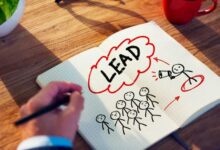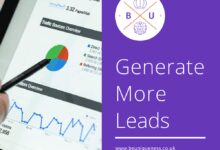Leads: 7 Powerful Strategies to Generate High-Quality Leads Fast
Want to grow your business fast? Start with mastering the art of generating leads. In today’s competitive market, high-quality leads are the lifeblood of sales and revenue. Let’s dive into proven strategies that convert.
What Are Leads and Why They Matter

At the heart of every successful business lies a steady stream of leads. But what exactly are leads? In simple terms, a lead is any individual or organization that shows interest in your product or service. This interest could come from filling out a form, subscribing to a newsletter, or engaging with your content online. Not all leads are created equal—some are just browsing, while others are ready to buy.
Defining a Lead in Modern Marketing
In digital marketing, a lead is more than just a name and email. It’s a potential customer who has taken a specific action indicating interest. According to HubSpot, a lead is someone who has crossed a defined threshold of engagement, such as downloading an eBook or requesting a demo. This action signals intent, making them more valuable than a casual visitor.
Types of Leads: MQL vs SQL
Not all leads are ready to talk to sales. Marketers often distinguish between two key types:
Marketing Qualified Leads (MQLs): These are leads who have engaged with marketing efforts but aren’t yet ready to buy.For example, someone who downloads a whitepaper or attends a webinar.Sales Qualified Leads (SQLs): These leads have been vetted by the sales team and show clear buying intent, such as requesting a price quote or a product demo.”A lead is not just a contact—it’s a conversation waiting to happen.” — Marketing Expert, Neil Patel
The Role of Leads in the Sales Funnel
Leads are the fuel that powers the sales funnel..
From awareness to decision, every stage relies on a continuous flow of qualified leads.Without them, even the best products can go unnoticed.The funnel starts broad with many potential leads and narrows down to those most likely to convert.Effective lead management ensures that no opportunity slips through the cracks..
How to Generate Leads Effectively
Generating leads isn’t about casting a wide net—it’s about fishing in the right pond. The most successful businesses use targeted strategies that attract the right audience. Whether you’re a startup or an established brand, understanding lead generation methods is crucial.
Content Marketing: The Foundation of Lead Generation
Content is king when it comes to attracting leads. High-value content like blogs, eBooks, and videos draws in visitors and encourages them to share their information. For example, offering a free guide in exchange for an email address is a classic lead magnet. According to Content Marketing Institute, content marketing generates three times as many leads as traditional marketing, at a lower cost.
Leveraging Social Media for Lead Capture
Social media platforms like LinkedIn, Facebook, and Instagram are powerful tools for generating leads. By running targeted ads or hosting live Q&A sessions, businesses can engage directly with potential customers. LinkedIn, in particular, is a goldmine for B2B leads. A study by LinkedIn Marketing Solutions found that 80% of B2B leads come from LinkedIn.
Email Marketing: Turning Subscribers into Leads
Email remains one of the most effective channels for nurturing leads. By building a list of subscribers and sending personalized content, businesses can guide prospects through the buyer’s journey. Tools like Mailchimp and ActiveCampaign help automate this process, making it easier to segment audiences and track engagement.
Top Lead Generation Tools and Platforms
Technology has revolutionized how we capture and manage leads. From CRM systems to landing page builders, the right tools can streamline your lead generation process and boost conversion rates.
CRM Systems: Managing Leads Efficiently
Customer Relationship Management (CRM) platforms like Salesforce, HubSpot CRM, and Zoho CRM are essential for organizing and tracking leads. These systems allow sales teams to monitor interactions, set follow-up reminders, and analyze lead behavior. According to Salesforce, companies using CRM see a 29% increase in sales performance.
Landing Page Builders for High-Converting Lead Capture
A well-designed landing page can make or break your lead generation efforts. Tools like Unbounce, Leadpages, and Instapage allow marketers to create high-converting pages without coding. Features like A/B testing and drag-and-drop editors help optimize for maximum lead capture.
Lead Scoring and Automation Tools
Not all leads deserve the same attention. Lead scoring tools assign points based on behavior, demographics, and engagement level. Platforms like Marketo and Pardot use automation to prioritize the hottest leads, ensuring sales teams focus on those most likely to convert.
Strategies to Convert Leads into Customers
Generating leads is only half the battle. The real challenge lies in converting them into paying customers. This requires a strategic approach to nurturing, communication, and timing.
Nurturing Leads with Drip Campaigns
Drip campaigns are automated email sequences designed to educate and engage leads over time. For example, a new subscriber might receive a series of emails introducing your product, sharing customer success stories, and offering a limited-time discount. This gradual approach builds trust and keeps your brand top-of-mind.
The Power of Personalization in Lead Conversion
Personalization goes beyond using a lead’s first name in an email. It’s about delivering relevant content based on their behavior and preferences. Research by Experian shows that personalized emails deliver 6x higher transaction rates. Dynamic content, tailored recommendations, and behavioral triggers can significantly boost conversion rates.
Timing and Follow-Up: When to Contact Leads
Speed matters. A MarketingProfs study found that the odds of qualifying a lead drop by 10x if the follow-up takes longer than 5 minutes. Implementing instant response systems—like automated SMS or chatbot replies—can dramatically improve engagement and conversion.
Measuring the Success of Your Lead Generation Efforts
You can’t improve what you don’t measure. Tracking key performance indicators (KPIs) is essential for understanding the effectiveness of your lead generation strategies.
Key Metrics to Track: Conversion Rate, CAC, and ROI
Several metrics help evaluate lead generation success:
- Conversion Rate: The percentage of visitors who become leads. A high conversion rate indicates effective messaging and design.
- Customer Acquisition Cost (CAC): How much it costs to acquire one customer. Lower CAC means better efficiency.
- Return on Investment (ROI): The revenue generated compared to the cost of lead generation efforts.
Using Analytics to Optimize Lead Campaigns
Tools like Google Analytics, Hotjar, and Mixpanel provide deep insights into user behavior. By analyzing traffic sources, bounce rates, and click patterns, marketers can identify what’s working and where improvements are needed. For instance, if a landing page has a high exit rate, A/B testing different headlines or CTAs can lead to better results.
A/B Testing for Continuous Improvement
A/B testing involves comparing two versions of a webpage, email, or ad to see which performs better. Even small changes—like button color or headline wording—can have a big impact on lead generation. Running regular tests ensures your campaigns evolve and improve over time.
Common Mistakes in Lead Generation (And How to Avoid Them)
Even experienced marketers make mistakes when generating leads. Recognizing these pitfalls early can save time, money, and frustration.
Targeting the Wrong Audience
One of the biggest mistakes is trying to appeal to everyone. This dilutes your message and attracts low-quality leads. Instead, create detailed buyer personas to understand your ideal customer’s pain points, goals, and behaviors. This focus ensures your content and offers resonate with the right people.
Overlooking Lead Nurturing
Many businesses focus on acquiring leads but neglect what happens next. Without proper nurturing, up to 80% of leads go cold. Implementing a structured follow-up process—through email, phone, or social media—keeps prospects engaged and moves them closer to a purchase decision.
Poor Follow-Up and Communication
Slow or generic responses can kill a promising lead. Sales teams must be trained to respond quickly and personalize their outreach. Using templates is fine, but they should be customized to reflect the lead’s specific interests and stage in the buyer’s journey.
Future Trends in Lead Generation
The world of lead generation is constantly evolving. Staying ahead of trends ensures your business remains competitive and relevant.
The Rise of AI and Predictive Lead Scoring
Artificial Intelligence (AI) is transforming how we identify and prioritize leads. Predictive lead scoring uses machine learning to analyze historical data and predict which leads are most likely to convert. Platforms like Salesforce Einstein and HubSpot’s AI tools are already integrating these capabilities, enabling smarter decision-making.
Voice Search and Conversational Marketing
With the growing use of smart speakers and voice assistants, optimizing for voice search is becoming crucial. Additionally, conversational marketing—using chatbots and live chat—allows real-time engagement with leads. According to Drift, 64% of consumers prefer to use messaging to communicate with businesses.
Privacy-First Lead Generation in a Cookieless World
With increasing privacy regulations and the phasing out of third-party cookies, businesses must adapt. First-party data collection, consent-based marketing, and value exchange (offering something valuable in return for data) are becoming the new standard. Transparency and trust are now more important than ever.
Real-World Examples of Successful Lead Generation Campaigns
Learning from real-world success stories can provide valuable insights and inspiration for your own campaigns.
Case Study: How HubSpot Grew with Inbound Leads
HubSpot built its entire business model around inbound marketing. By creating educational content, free tools, and certifications, they attracted millions of leads. Their blog alone generates over 4.5 million monthly visits, funneling prospects into their ecosystem. This long-term strategy has made them a leader in the marketing automation space.
Example: Dropbox’s Referral Program That Went Viral
Dropbox used a simple yet powerful lead generation tactic: a referral program. Users received extra storage space for inviting friends. This created a viral loop that increased sign-ups by 60% overnight. The key was offering real value in exchange for sharing, turning users into advocates.
How Salesforce Uses Webinars to Capture B2B Leads
Salesforce regularly hosts webinars on topics like CRM best practices and digital transformation. These events attract thousands of registrants—each one a potential lead. By delivering high-value content and following up with personalized offers, they convert attendees into customers.
What is the best way to generate leads?
The best way to generate leads depends on your audience and industry, but proven methods include content marketing, social media advertising, email campaigns, and SEO. Offering valuable lead magnets—like free guides or trials—in exchange for contact information is a highly effective strategy.
How do you qualify a lead?
A lead is qualified based on criteria like engagement level, demographic fit, and buying intent. Marketing teams often use lead scoring models to rank leads, while sales teams assess readiness through direct conversations and follow-ups.
What tools are best for managing leads?
Top tools for managing leads include CRM platforms like HubSpot, Salesforce, and Zoho CRM. These systems help track interactions, automate follow-ups, and analyze performance to improve conversion rates.
How long does it take to convert a lead?
The conversion timeline varies by industry and product complexity. Some leads convert in minutes (e.g., e-commerce), while B2B sales cycles can take weeks or months. Nurturing and timely follow-up significantly reduce this time.
Are cold leads worth pursuing?
Cold leads can be worth pursuing with the right nurturing strategy. While they may not be ready to buy immediately, consistent engagement through email, content, and retargeting ads can warm them up over time.
Leads are the foundation of growth in any business. From understanding what leads are to mastering the tools and strategies that generate them, every step matters. By focusing on quality over quantity, using the right technology, and avoiding common mistakes, you can build a sustainable pipeline of high-converting leads. The future of lead generation is smart, personalized, and privacy-conscious—those who adapt will thrive.
Further Reading:



